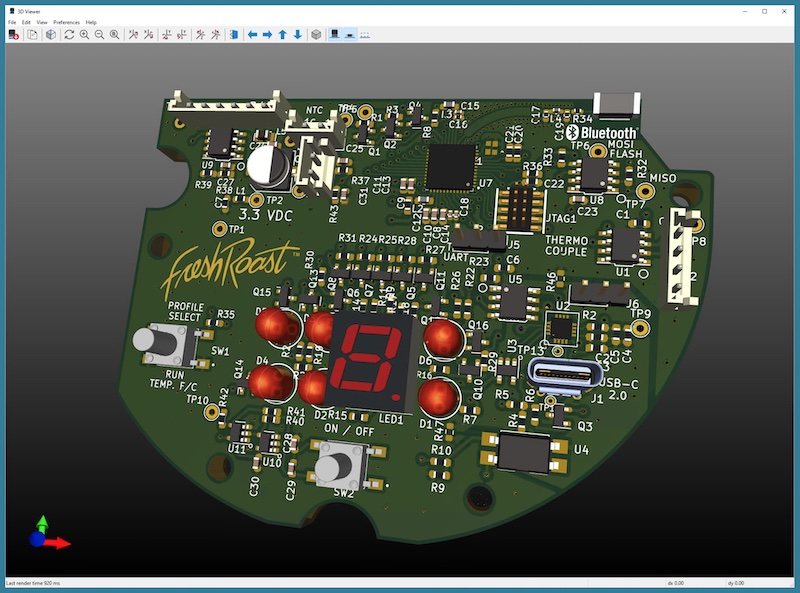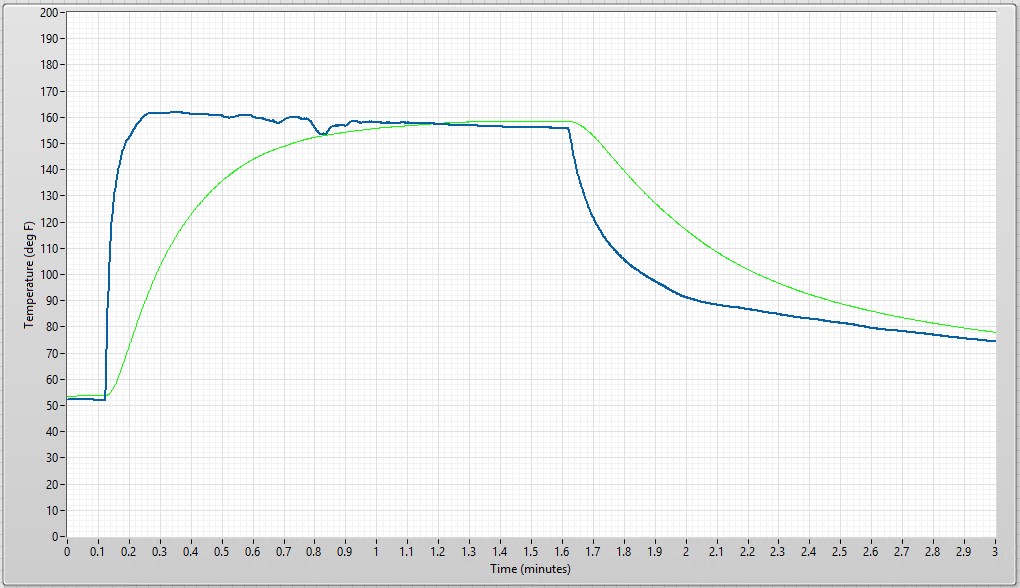
Login
Shoutbox
You must login to post a message.
renatoa
07/26/2024 3:49 PM
Bill grubbe and Jk, 

allenb
07/26/2024 5:15 AM
Spiderkw Welcome to HRO!


renatoa
07/24/2024 8:31 AM
ramiroflores and John123,

 ?
?

 ?
?renatoa
07/21/2024 1:18 AM
 , Luislobo
, Luisloborenatoa
07/19/2024 11:28 AM
Koepea, 

Forum Threads
Newest Threads
Skywalker roaster modsBackground Roast Iss...
Hello from Arkansas
TC4ESP
Green coffee reviews
Hottest Threads
| Skywalker roaster... | [375] |
| TC4ESP | [115] |
| War on Farmers by... | [47] |
| Adventures in flu... | [26] |
| Hello! (soon) Roa... | [17] |
Donations
Latest Donations
dmccallum - 10.00
JackH - 25.00
snwcmpr - 10.00
Anonymous - 2.00
Anonymous - 5.00
dmccallum - 10.00
JackH - 25.00
snwcmpr - 10.00
Anonymous - 2.00
Anonymous - 5.00
Users Online
Guests Online: 6
Members Online: 0
Total Members: 8,393
Newest Member: Bill grubbe
Members Online: 0
Total Members: 8,393
Newest Member: Bill grubbe
View Thread
Who is here? 1 guest(s)
|
Fresh Roast SR540/800 Retrofit Logic Board: Comments Needed
|
|
| dflohr |
Posted on 02/03/2023 12:05 PM
|
|
Newbie  Posts: 1 Joined: January 09, 2023 |
Looking for some feedback to gauge interest and get some thoughts and comments. I’ve recently seen a number of new, high end home roasters hitting Kickstarter and Indiegogo, and learning about Artisan. Have also seen here and elsewhere a variety of “hacks” to the very affordable Fresh Roast SR540/SR800 family to try to enhance functionality and enable roasting away from the roaster. To that end, (along with assistance from Tom at http://cholla.mmto.org/coffee/ ) I designed an easily installable logic board replacement for the Fresh Roast SR540/SR800 roasters. While the basic firmware operating system for the ARM microcontroller is working, a lot of new code routines would need to be written specifically for this board. Trying to gauge whether it’s worth the time. The board is designed as a low voltage only, easily replaceable logic board for SR540 and SR800. The control scheme of the untouched fan and heater would remain. The two existing cable connectors would simply be plugged in as is. While the existing membrane switch front plate would need to be removed and could be reused, a new one would be better and has been designed. This is a partial list of what the new board would include and support: 1. Bluetooth and USB for a remote interface for control, live monitoring and programming 2. Support for the existing thermistor, plus support for one additional thermistor and one thermocouple 3. An API for any program and app to interface with the roaster. Artisan should be supportable 4. Flash memory for storage of 10 roasting profiles and roaster setup parameters 5. USB opto-isolation for safety when plugged into a computer or laptop 6. True On-Off power switch for the logic board along with reduced power consumption All thoughts appreciated.
dflohr attached the following image:
Edited by renatoa on 02/04/2023 3:20 AM |
|
|
|
| Gullygossner |
Posted on 02/19/2023 9:56 PM
|
|
1/4 Pounder  Posts: 95 Joined: January 06, 2019 |
This is interesting and I think something that would appeal to freshroast owners. I would mainly want artisan control of the heater/fan along with the roast logging that comes along with that. Do you have a target price point for such a board? |
|
|
|
| dwertz |
Posted on 02/21/2023 3:21 PM
|
|
Newbie  Posts: 45 Joined: October 19, 2022 |
A couple of thoughts. The thermocouple interface would also need to be isolated. I think DC power is going to be a problem unless your board draws the same current as the factory board. I would have to go back and look, but I remember a simple shunt regulator fed through capacitive coupling to the mains. You might consider a separate isolated supply. Then you could ground your board. |
|
|
|
| renatoa |
Posted on 02/22/2023 2:18 AM
|
|
Administrator  Posts: 3104 Joined: September 30, 2016 |
Quote Why? is roast chamber connected to mains ? Or, you can use an isolated sheath... inserted into RC through a silicone gasket... |
|
|
|
| dwertz |
Posted on 02/22/2023 2:57 AM
|
|
Newbie  Posts: 45 Joined: October 19, 2022 |
That is a fair point. I did not consider using an insulated thermocouple. The exposed metal the roast chamber sits on is actually grounded. It is the only thing grounded on the roaster. Most people insert the thermocouple through the lid of the chaff collector which is a thermoplastic. I was just thinking the leads of the thermocouple itself would not be grounded and would have the same voltage as the "gnd" of the control board which we now know is not 0V. I think using an isolated power supply internal to the unit solves all the isolation issues and works around the wimpy internal supply. Something along these lines https://www.digik...5/13664879 Edited by renatoa on 02/22/2023 4:07 AM |
|
|
|
| renatoa |
Posted on 02/22/2023 4:15 AM
|
|
Administrator  Posts: 3104 Joined: September 30, 2016 |
As isolated as could be... many people have issues when powering electronic boards from USB ports of laptops powered from mains... which are also supposed to be isolated... The issues are gone when mains cord unplugged and laptop is on battery. Or, an alternative, I would go for Pt sensors. Much more less sensible to noisy mains and leaks. Just think that the voltage change for a Pt RTD is about 100 times bigger than for a thermocouple... 41 µV/°C K TC vs 3.85 mV/°C Pt100. |
|
|
|
| dwertz |
Posted on 02/25/2023 6:19 PM
|
|
Newbie  Posts: 45 Joined: October 19, 2022 |
I have been wanting to try an RTD in the roaster. I ordered one from Amazon and I will do a head-to-head comparison. I feel like looking at the temperature with the thermocouple is totally fine, but the ROR gets really noisy with short sampling intervals. One thing I am not too sure about is the response time. The RTD I purchased is a 5mm probe. My existing thermocouple is 3.2mm. I will measure the response time and noise. The isolation comment was really more about the user safety aspect than sensitivity and susceptibility. |
|
|
|
| renatoa |
Posted on 02/26/2023 2:34 AM
|
|
Administrator  Posts: 3104 Joined: September 30, 2016 |
Short sampling is a plus not a minus. Allows you oversampling and average. A long sampling, like 300 milliseconds in TC4, does not mean the input is averaged during this interval. I got cleaner reading using the 16 bit 70 msec mode than the 18 bit 300 msec from same DAC. Let see what is the response time of the 5mm probe. If less than 6 seconds, then will be fine. |
|
|
|
| dwertz |
Posted on 03/04/2023 11:03 PM
|
|
Newbie  Posts: 45 Joined: October 19, 2022 |
I measured my existing 3.2mm Thermocouple and a new 5.0mm pt100 RTD. The probes started at ambient in my shop and were then placed into a hot cup of water. The probes were taped about 1cm apart and I was swirling them around in the cup. Then they were removed from the hot water and placed on the bench with the probes up in the air. The RTD is WAY slower than the thermocouple. Ther is a 3.2mm PT1000 RTD available from phidgets but it is pretty spendy at $57 with shipping
dwertz attached the following image:
|
|
|
|
| dwertz |
Posted on 03/04/2023 11:14 PM
|
|
Newbie  Posts: 45 Joined: October 19, 2022 |
Same sensors held over the SR800 roast chamber while toggling the heater on and off. I plotted the ROR at the tail end of the cooling and the RTD is significantly less noisy. My opinion is the 5mm RTD is too slow for PID control. I might pop for the 3.2mm probe just to see if it is similar speed to the thermocouple. If it is, then I will give it a try for PID control.
dwertz attached the following images:
|
|
|
|
| renatoa |
Posted on 03/05/2023 7:34 AM
|
|
Administrator  Posts: 3104 Joined: September 30, 2016 |
Slow or fast, PID is not the right way to drive a roast. PID is not for moving targets, especially at the level of noise in a roaster. At best you can succeed if changing the coefficients at least in 3-4 points. A single set of coefficients can't be used for RoR in a range from 30 to 5 C degrees. By noise I don't mean electrical or acquisition related reasons, but simply the nature of random contact of the probe with the beans. Sorry to revive again this rant from the past  |
|
|
|
| dwertz |
Posted on 03/12/2023 12:02 AM
|
|
Newbie  Posts: 45 Joined: October 19, 2022 |
OK the 3.2mm RTD showed up today and it is the same speed as the 3.2mm thermocouple. The 5mm RTD was a three wire pt100 device. The new 3.2mm RTD is a four wire pt1000 device and it is significantly quieter than the 5mm probe. Attached is a steady state unfiltered ROR plot from the thermocouple and the pt1000 RTD. I definitely will be switching to the RTD for my next roast. I whole heartedly recommend adding an RTD interface to your board if you can swing it.
dwertz attached the following image:
Edited by dwertz on 03/12/2023 3:52 AM |
|
|
|
| dwertz |
Posted on 03/12/2023 12:24 AM
|
|
Newbie  Posts: 45 Joined: October 19, 2022 |
Quote renatoa wrote: Slow or fast, PID is not the right way to drive a roast. PID is not for moving targets, especially at the level of noise in a roaster. At best you can succeed if changing the coefficients at least in 3-4 points. A single set of coefficients can't be used for RoR in a range from 30 to 5 C degrees. By noise I don't mean electrical or acquisition related reasons, but simply the nature of random contact of the probe with the beans. Sorry to revive again this rant from the past  We should start a new thread so that we do not completely hijack this one. I disagree with this post's assertion that PID can not be used for moving targets. |
|
|
|
| Jump to Forum: |
Powered by PHP-Fusion Copyright © 2024 PHP-Fusion Inc
Released as free software without warranties under GNU Affero GPL v3
Designed with ♥ by NetriXHosted by skpacman









